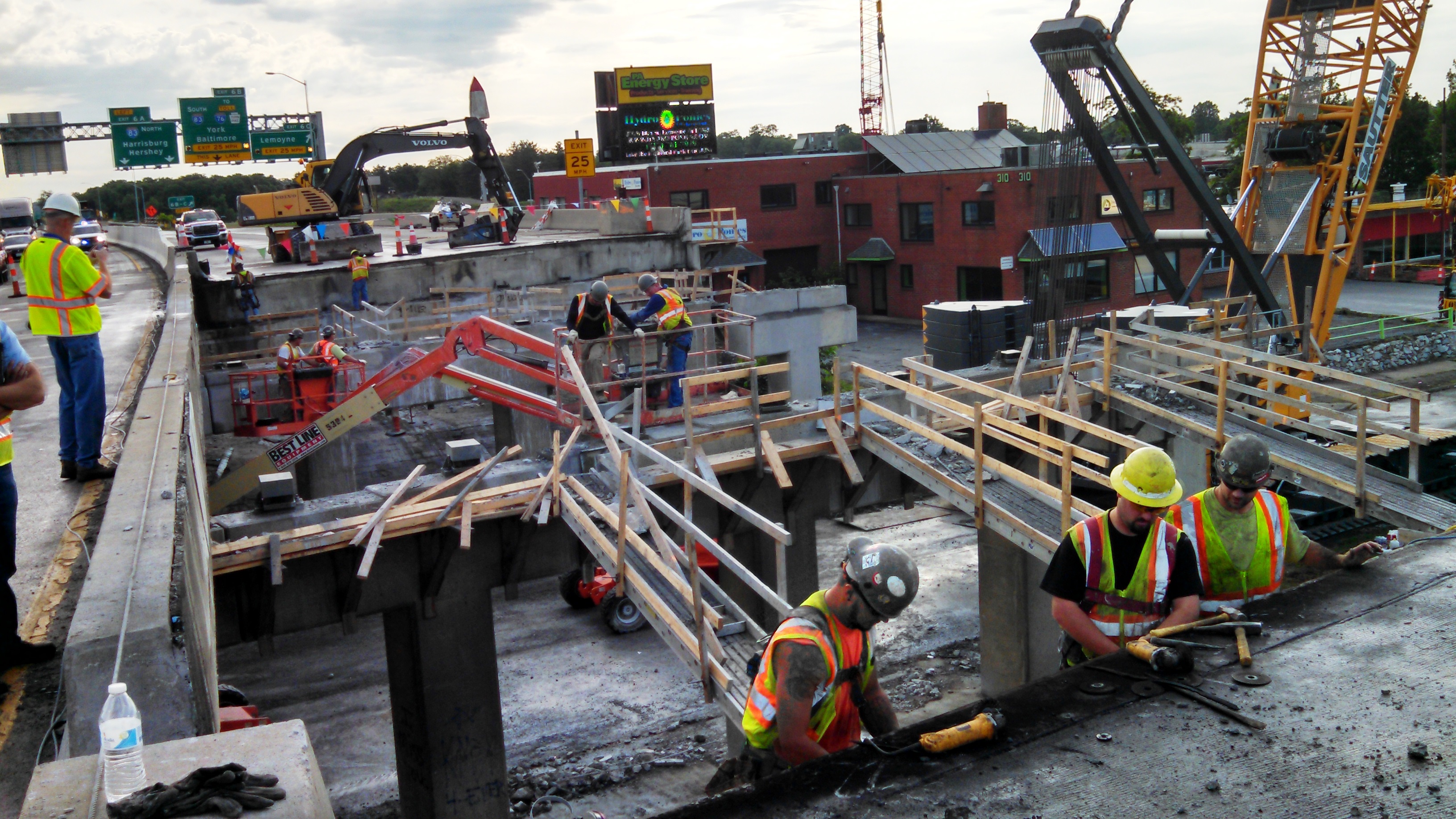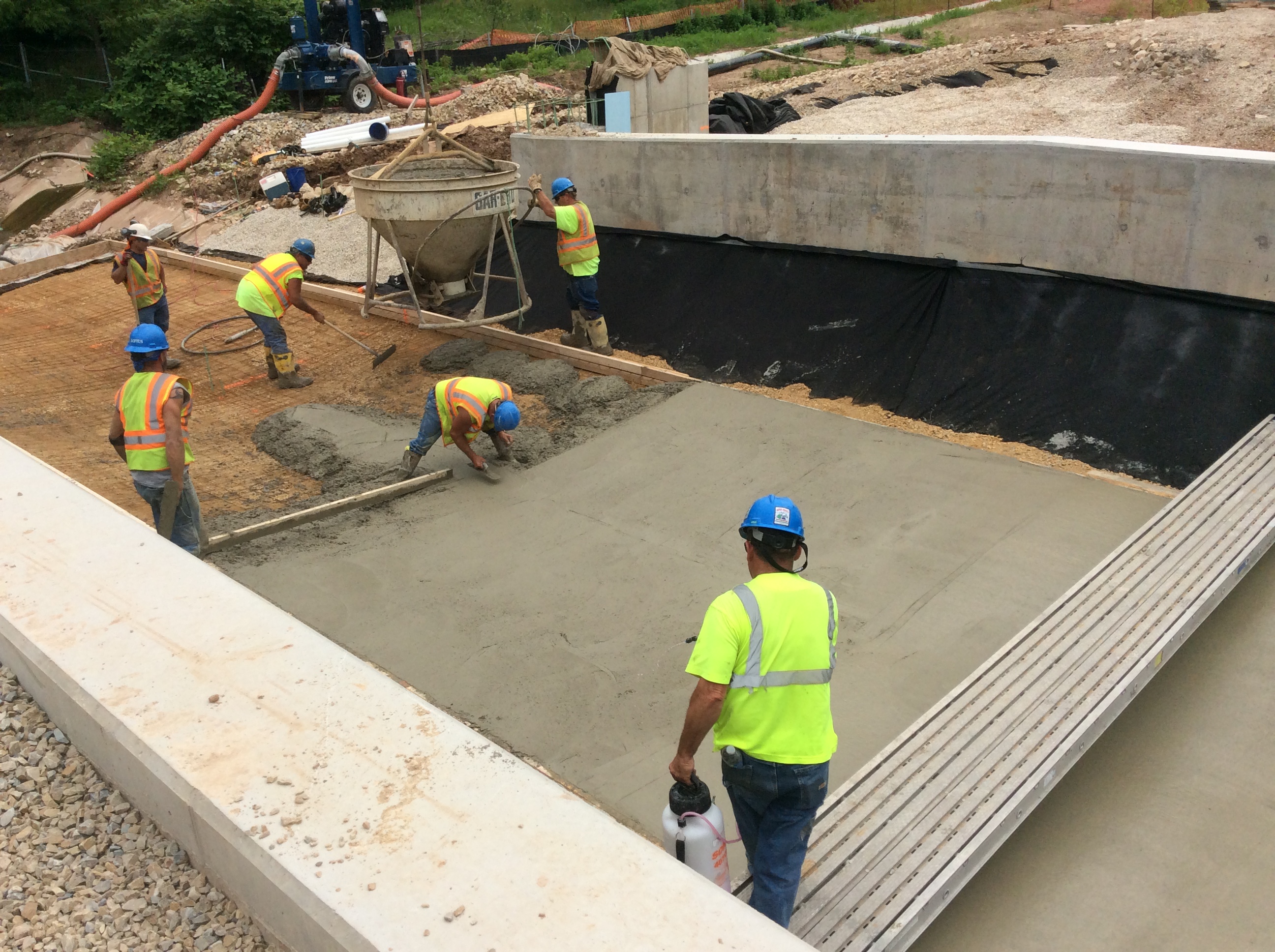Accelerated Bridge Construction
PennDOT, the Pennsylvania Turnpike Commission (PTC) and local municipalities use Accelerated Bridge Construction (ABC) to build more durable bridges faster, reducing onsite construction time and improving safety without sacrificing quality. ABC is a Federal Highway Administration (FHWA) Every Day Counts Round 2 (EDC-2) innovation that Pennsylvania championed.
How Does It Work?
ABC techniques are changing the way PennDOT, the PTC and local municipalities perform bridge construction. Bridges can now be replaced within a matter of hours versus several weeks, and these techniques can help to reduce planning and bridge maintenance efforts by years. There are several innovative planning, materials, and construction techniques that are being incorporated into ABC projects in Pennsylvania.

Accordion
Expand AllClick here for a more accessible versionGRS-IBS use alternating layers of geotextile and compacted stone to create bridge substructure units and strengthen the approach roadway. The integrated bridge system is created when the units are combined with beams and deck.
PBES are structural components of a bridge that are built offsite, or adjacent to the alignment. The components are then transported and fitted together at the bridge site.
UHPC is a steel fiber-reinforced cementitious composite material that is exceptionally strong and durable. UHPC is used to create stronger and longer-lasting connections between prefabricated bridge elements.
Slide-in Bridge Replacement involves building a new bridge parallel to an existing one. During construction, traffic continues uninterrupted on the existing bridge. When construction is completed, the existing structure is demolished or removed, and the new bridge is slid into place.
Quick Construction Box Culverts are manufactured parts delivered to the construction site that offer a range of sizes and configurations to fit specific site conditions. Box culverts drain high volumes of water and generally handle a higher flow rates than pipes. They offer superior strength and, when properly installed, box culverts can provide maintenance-free service for a long time.
Expanded Polystyrene Geofoam, a rapid embankment construction technique, is a lightweight, rigid foam plastic being used in place of traditional embankment or back-fill materials. It is much lighter than traditional materials and can be used to reduce ground settlement, ground instability, or lateral pressures exerted by the fill.
What Are The Benefits?
ABC simplifies and accelerates bridge construction. It allows bridges to be replaced within 48 to 72 hours and can reduce planning and bridge construction efforts, as well as project costs. These methods provide safer, more durable and longer-lasting bridges than conventional bridge techniques and significantly reduce traffic delays and road closures. ABC also increases work zone safety for construction workers and motorists by shortened travel lane restrictions and road closure durations, while construction occurs away from the project site. Major disruptions to the road can be scheduled during nights and weekends when there are lower traffic volumes.

Innovation in Motion
PennDOT District 11 performed an ABC project on a structurally deficient bridge along U.S. Route 30 over Bessemer Avenue in East Pittsburgh Borough, Allegheny County, due to the location’s narrow urban corridor and high traffic volumes of about 22,000 vehicles per day. ABC allowed the crews to demolish and replace the bridge structure in 57 hours. Beginning at 9 p.m. on the first night, a Friday, the bridge was closed, and by Saturday night the structure was demolished. From Saturday night through Sunday morning, crews set the new precast deck and the approach slabs. Then, from Sunday afternoon through Monday morning, UHPC was used to bond the individual pieces into a uniform structure. The bridge was reopened to traffic by 6 a.m., Monday, in time for morning rush hour.
Several factors allowed this bridge replacement to occur quickly, including that the substructure was in good condition and able to continue to carry the load of the new superstructure with traffic. The tops of the existing abutments were replaced with new precast caps. The deck was fabricated locally in Saxonburg, Butler County, then pre-assembled and unassembled prior to being transported to the project location.
ABC was also utilized in PennDOT District 8 on an 80-year old poor-condition bridge on U.S. Route 11 in Carlisle, Cumberland County. Instead of being closed for three to six months, the U.S. Route 11 bridge was closed for just two weeks. Nearly 8,500 vehicles use that section of U.S. Route 11 each day. The bridge is a short distance southwest from Carlisle in an area where many large warehouses were built in recent years. The replacement of the one-span bridge was conducted using precast bridge components for the foundation, abutments, beams and deck.